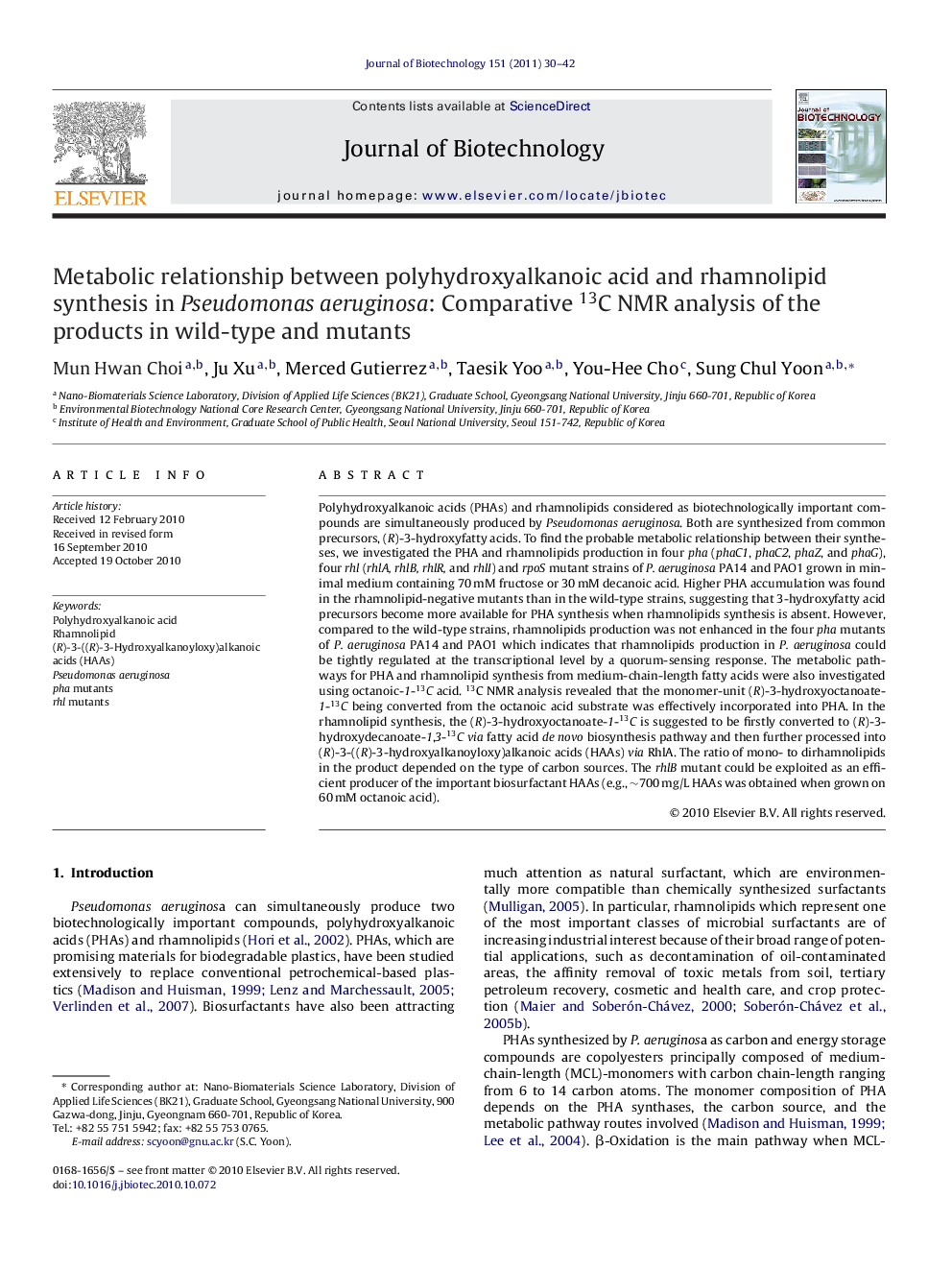| کد مقاله | کد نشریه | سال انتشار | مقاله انگلیسی | نسخه تمام متن |
|---|---|---|---|---|
| 23931 | 43483 | 2011 | 13 صفحه PDF | دانلود رایگان |

Polyhydroxyalkanoic acids (PHAs) and rhamnolipids considered as biotechnologically important compounds are simultaneously produced by Pseudomonas aeruginosa. Both are synthesized from common precursors, (R)-3-hydroxyfatty acids. To find the probable metabolic relationship between their syntheses, we investigated the PHA and rhamnolipids production in four pha (phaC1, phaC2, phaZ, and phaG), four rhl (rhlA, rhlB, rhlR, and rhlI) and rpoS mutant strains of P. aeruginosa PA14 and PAO1 grown in minimal medium containing 70 mM fructose or 30 mM decanoic acid. Higher PHA accumulation was found in the rhamnolipid-negative mutants than in the wild-type strains, suggesting that 3-hydroxyfatty acid precursors become more available for PHA synthesis when rhamnolipids synthesis is absent. However, compared to the wild-type strains, rhamnolipids production was not enhanced in the four pha mutants of P. aeruginosa PA14 and PAO1 which indicates that rhamnolipids production in P. aeruginosa could be tightly regulated at the transcriptional level by a quorum-sensing response. The metabolic pathways for PHA and rhamnolipid synthesis from medium-chain-length fatty acids were also investigated using octanoic-1-13C acid. 13C NMR analysis revealed that the monomer-unit (R)-3-hydroxyoctanoate-1-13C being converted from the octanoic acid substrate was effectively incorporated into PHA. In the rhamnolipid synthesis, the (R)-3-hydroxyoctanoate-1-13C is suggested to be firstly converted to (R)-3-hydroxydecanoate-1,3-13C via fatty acid de novo biosynthesis pathway and then further processed into (R)-3-((R)-3-hydroxyalkanoyloxy)alkanoic acids (HAAs) via RhlA. The ratio of mono- to dirhamnolipids in the product depended on the type of carbon sources. The rhlB mutant could be exploited as an efficient producer of the important biosurfactant HAAs (e.g., ∼700 mg/L HAAs was obtained when grown on 60 mM octanoic acid).
Journal: Journal of Biotechnology - Volume 151, Issue 1, 10 January 2011, Pages 30–42